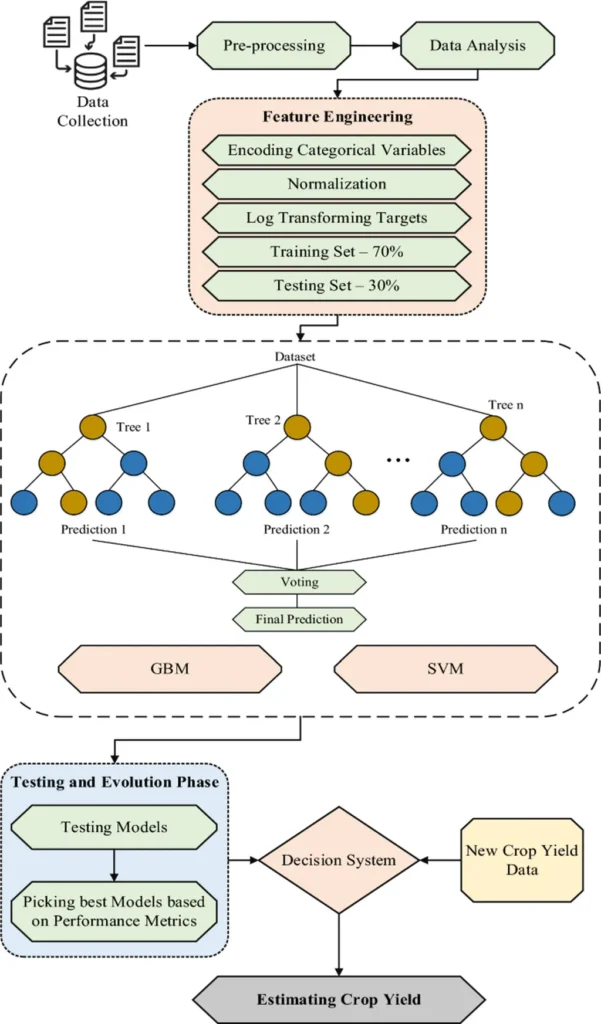In the realm of agricultural technology, precision is key. Farmers and researchers alike are constantly seeking ways to gather more accurate, high-resolution data to monitor crop health, manage irrigation, and predict droughts. A recent study published in *Remote Sensing* offers a promising solution to a longstanding challenge in remote sensing: acquiring high-resolution land surface temperature (LST) data. The research, led by Hongxia Ma from the School of Electrical and Electronic Engineering at Ningxia University, introduces a novel deep learning model called SRDA-Net, which could revolutionize how we approach agricultural monitoring and climate research.
Land surface temperature is a critical parameter for a variety of applications, from agricultural drought monitoring to crop growth analysis. However, the data available from satellites like MODIS, while frequent, is often too coarse in resolution to be truly useful at a local level. “The challenge has always been to achieve both fine spatial and temporal resolution,” explains Ma. “Traditional methods of interpolation or fusion often fall short in capturing the spatial details and heterogeneity of the land surface.”
Enter SRDA-Net, or the spatial resolution downscaling attention network. This deep learning model is designed to upscale the resolution of MODIS LST data from 1000 meters to just 250 meters, a significant improvement that could have profound implications for the agriculture sector. The model leverages global resolution attention to capture feature interactions between MODIS LST and auxiliary data, addressing spatial heterogeneity more effectively than traditional methods. It also employs a multi-level feature refinement module to strengthen spatial dependency relationships, ensuring that the data remains accurate and interpretable.
The results speak for themselves. In simulation experiments, SRDA-Net achieved an impressive mean absolute error (MAE) of 0.928 K and an R² of 0.95. In farmland areas, the model performed even better, with an MAE of 0.615 K and an R² of 0.96. These metrics translate to more accurate and reliable data for farmers and researchers, enabling better irrigation scheduling and crop health monitoring.
The commercial impacts of this research could be substantial. With more precise LST data, farmers can make more informed decisions about water usage, potentially saving on costs and conserving this vital resource. Additionally, the ability to monitor drought conditions with greater accuracy can help in predicting and mitigating the effects of climate change on agriculture. “This technology has the potential to support not just agriculture but also interdisciplinary applications like ecological monitoring and climate change research,” says Ma.
The study also highlights the model’s robustness across multiple scales, achieving an RMSE of 1.804 K, an MAE of 1.587 K, and an R² of 0.915 in target downscaling experiments. This versatility makes SRDA-Net a valuable tool for a wide range of applications, from precision agriculture to environmental monitoring.
As we look to the future, the integration of AI and deep learning models like SRDA-Net into agricultural practices could pave the way for more sustainable and efficient farming. The ability to generate high spatio-temporal resolution LST data opens up new possibilities for research and practical applications, ultimately supporting the global effort to address food security and climate change.
In a field where every degree of precision counts, SRDA-Net represents a significant step forward. As the agriculture sector continues to embrace technology, innovations like this will be crucial in shaping a more resilient and productive future.

